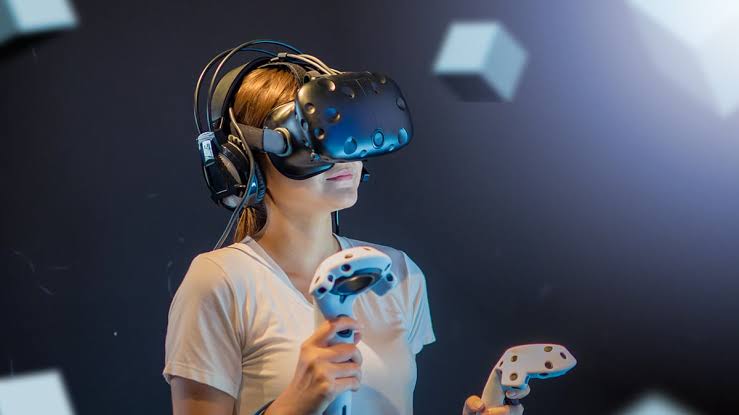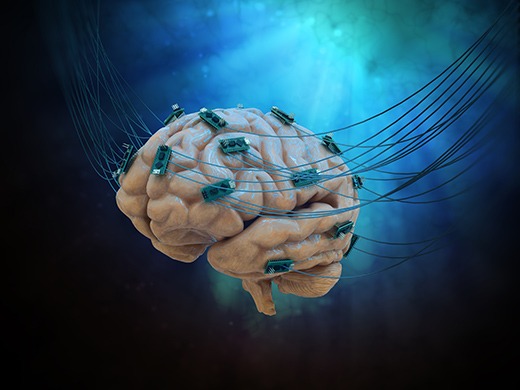
VR and AR in Experiential Learning
VR and AR transform experiential learning by immersing students in interactive, realistic environments that boost engagement, understanding, and retention. They support diverse learning styles, facilitate collaboration, and enable safe, remote training across multiple industries. Despite challenges like cost and technical needs, continuous innovation is expanding their accessibility. Together, these technologies are poised to revolutionize education by making learning more immersive, personaliz
✨ Raghav Jain

Introduction
Learning today is evolving rapidly with technology. Traditional classroom methods are making way for interactive, immersive experiences that engage learners deeply. Among the most transformative tools are Virtual Reality (VR) and Augmented Reality (AR) — technologies that bring lessons to life through simulation and interaction.
Together, VR and AR provide experiential learning—where learners gain knowledge by doing, experiencing, and exploring rather than just reading or listening. This approach boosts understanding, retention, and real-world application.
In this article, we’ll explore how VR and AR are revolutionizing experiential learning, their unique benefits, practical applications, challenges, and ways to incorporate these tools in everyday education and training. Virtual Reality (VR) and Augmented Reality (AR) are no longer just tools for gaming and entertainment; they are fundamentally reshaping the field of education by offering powerful new avenues for experiential learning. This is a pedagogical shift that moves beyond traditional lectures and textbooks, immersing students in interactive, hands-on experiences that were once impossible, too dangerous, or too expensive to achieve. The core of this revolution is the ability of VR and AR to create a direct, visceral connection between theoretical knowledge and its practical application.
Virtual Reality, which creates a fully immersive, computer-generated environment, excels at providing students with risk-free and accessible simulations. In a VR environment, a medical student can practice a complex surgical procedure, an engineering student can assemble a jet engine, or a pilot trainee can fly a plane in a variety of weather conditions, all without any real-world consequences. This "learning by doing" approach is highly effective because it allows for repeated practice and immediate feedback in a controlled setting. VR can also transport students to different times and places, enabling them to explore ancient Rome, walk on the surface of Mars, or witness historical events firsthand. This capability transforms abstract concepts into tangible, memorable experiences, significantly boosting engagement and long-term knowledge retention.
Augmented Reality, on the other hand, superimposes digital information onto the real world, enriching the physical environment with interactive overlays. Unlike VR, AR doesn't require a headset to completely block out the surroundings; it can be experienced through a smartphone, tablet, or smart glasses. This makes it an incredibly versatile and accessible tool for the classroom. For example, a student can point a tablet at a textbook image of the human heart, and an AR application can make a 3D model of it appear on the screen, showing its different chambers and how blood flows through it. In a biology class, a teacher can use AR to project a virtual frog for dissection, allowing students to learn anatomy without the need for a real specimen. This technology bridges the gap between the theoretical and the practical, making complex subjects more understandable and interactive.
The benefits of using VR and AR in experiential learning are numerous. They foster a deeper understanding of complex topics by providing a visual and spatial context that traditional methods cannot. They promote collaboration as students can work together in a shared virtual space, regardless of their physical location. They also address different learning styles, particularly for visual and kinesthetic learners who learn best through observation and action. By making learning more interactive and game-like, these technologies can significantly increase student motivation and participation. While the cost and accessibility of hardware can still be a barrier, the rapid development of mobile and cloud-based platforms is making these immersive learning tools more available than ever, paving the way for a new era of education.
What is Experiential Learning?
Experiential learning is a process where knowledge is gained through direct experience. Instead of passive learning, learners actively participate, reflect, and apply what they learn.
Core principles of experiential learning include:
- Hands-on involvement
- Realistic scenarios
- Reflection and feedback
- Problem-solving and critical thinking
VR and AR provide perfect platforms to simulate real-life environments and situations, making experiential learning more accessible and effective.
Understanding VR and AR
Virtual Reality (VR):
VR immerses users in a fully digital, computer-generated environment. With headsets and motion controllers, learners feel “inside” a different world—whether it’s a historical site, a lab, or a factory floor.
Augmented Reality (AR):
AR overlays digital content (images, information, 3D models) onto the real world, usually via smartphones, tablets, or AR glasses. It enhances the real environment by adding interactive elements without removing the learner from reality.
How VR and AR Enhance Experiential Learning
1. Immersive Engagement
VR transports learners to environments impossible to visit physically—outer space, ancient civilizations, or inside the human body. AR adds layers of information to real-world objects, making learning contextual and vivid.
2. Safe Practice Environment
VR allows learners to practice dangerous or complex tasks without risk—surgery simulations, industrial machine operations, or emergency response drills.
3. Multi-Sensory Learning
Both VR and AR stimulate sight, sound, and sometimes touch. This multi-sensory input helps reinforce memory and understanding.
4. Personalized Pace and Style
Learners can repeat VR/AR experiences, explore areas of interest, and learn at their own speed, accommodating different learning styles.
5. Real-Time Feedback
Interactive VR/AR environments provide instant feedback and assessments, enabling learners to improve skills actively.
Practical Applications of VR and AR in Learning
Education
- Science: VR labs let students experiment with chemicals safely. AR apps show 3D models of plants, animals, and molecules.
- History: Walk through ancient ruins or historical battles with VR, or point AR devices at textbooks for interactive content.
- Language Learning: Practice conversations in virtual settings or use AR flashcards with pronunciation guides.
Professional Training
- Medical: VR simulates surgeries and patient care. AR assists with anatomy visualization during operations.
- Military: VR combat simulations prepare soldiers for various scenarios without physical danger.
- Manufacturing: AR guides workers on assembly lines with step-by-step instructions and hazard warnings.
Corporate Learning
- Onboarding through VR tours of the workplace.
- Soft skills training with VR role-playing for interviews or customer interactions.
- AR-enhanced manuals for equipment handling.
Challenges and Considerations
- Cost and Accessibility: VR equipment and software can be expensive, limiting use in some schools or companies.
- Technical Skills Needed: Both learners and instructors may need training to use VR/AR effectively.
- Motion Sickness and Fatigue: Some users experience discomfort using VR for long periods.
- Content Quality: Poorly designed VR/AR experiences can confuse rather than educate.
- Integration: Needs to complement, not replace, traditional methods.
Tips to Integrate VR and AR in Experiential Learning
- Start Small: Use simple AR apps on smartphones before investing in VR headsets.
- Align with Curriculum: Ensure VR/AR experiences match learning objectives clearly.
- Blend with Traditional Learning: Use VR/AR as a supplement, followed by discussion and reflection.
- Train Instructors: Provide teachers and trainers with resources and support.
- Gather Feedback: Regularly assess user experience and learning outcomes to improve content.
Daily VR and AR Learning Practices
Morning
- Start with a brief AR activity—explore a 3D model related to your subject.
- Watch a VR lesson or simulation video (10–15 mins).
Afternoon
- Participate in an interactive VR or AR quiz or group challenge.
- Reflect by journaling or group discussion about the experience.
Evening
- Use AR flashcards or language apps for review.
- Watch educational VR content to reinforce learning passively.
Myths About VR and AR in Learning: Busted!
“VR/AR will replace teachers.”
→ False! These tools assist teachers but human guidance remains essential.
“Only tech-savvy people can use VR and AR.”
→ Wrong! User-friendly interfaces and training make it accessible to most.
“VR causes too much motion sickness to be practical.”
→ Motion sickness can be managed with proper breaks and settings.
“VR and AR are just for gaming, not serious learning.”
→ These technologies have proven educational benefits across many fields.
“You need expensive gear to get started.”
→ Many free or low-cost AR apps work on regular smartphones and tablets.
Conclusion
VR and AR are reshaping experiential learning by creating immersive, engaging, and personalized experiences that textbooks alone cannot offer. They allow learners to explore, practice, and apply knowledge safely and effectively—whether in schools, universities, professional training, or corporate development.
The key to success lies in thoughtful integration, balancing technology with human interaction and reflection. When used well, VR and AR spark curiosity, deepen understanding, and prepare learners for real-world challenges.
Start exploring VR and AR tools today, no matter your field or age. Embrace this new era of experiential learning where imagination meets reality, and knowledge becomes an unforgettable experience.
Your journey to smarter, more interactive learning begins now.
Q&A Section
Q1:- What are Virtual Reality (VR) and Augmented Reality (AR) in the context of experiential learning?
Ans :- VR immerses learners in a fully digital environment, while AR overlays digital content onto the real world, both enhancing interactive, hands-on learning experiences.
Q2:- How do VR and AR improve student engagement compared to traditional learning methods?
Ans :- They provide immersive, interactive scenarios that increase motivation, attention, and retention by allowing learners to actively explore and practice concepts.
Q3:- In what ways can VR simulate real-world environments for training purposes?
Ans :- VR can recreate realistic settings such as medical surgeries, engineering tasks, or historical sites, enabling safe practice without real-world risks.
Q4:- How does AR facilitate collaborative learning in classrooms?
Ans :- AR apps enable students to interact with 3D models and digital content together in real time, promoting teamwork and shared problem-solving.
Q5:- What benefits do VR and AR offer for learners with different learning styles or abilities?
Ans :- By catering to visual, auditory, and kinesthetic learners through immersive and customizable experiences, VR and AR make education more accessible and personalized.
Q6:- How can VR and AR support remote and distance learning?
Ans :- These technologies create virtual classrooms and labs that students can access anywhere, bridging geographical barriers and fostering interactive participation.
Q7:- What industries are currently using VR and AR for experiential training?
Ans :- Healthcare, aviation, military, manufacturing, and architecture use VR and AR for realistic simulations and skill development.
Q8:- Are there challenges or limitations in implementing VR and AR in education?
Ans :- High costs, technical complexity, limited content availability, and the need for teacher training can hinder widespread adoption.
Q9:- How does VR and AR enhance memory retention in learners?
Ans :- Immersive multisensory experiences activate deeper cognitive processing, making information easier to recall compared to passive learning.
Q10:- What is the future potential of VR and AR in transforming experiential learning?
Ans :- Advances in hardware, AI integration, and content development promise more affordable, adaptive, and widespread use, revolutionizing how knowledge and skills are acquired.
Similar Articles
Find more relatable content in similar Articles

Neurotechnology: Connecting th..
Neurotechnology is revolutioni.. Read More

Solar-Powered Wearables: Can T..
Solar-powered wearables are re.. Read More

AI in Drug Discovery: Faster C..
Artificial Intelligence is rev.. Read More

Holographic Displays: Will You..
“Exploring the Future of Commu.. Read More
Explore Other Categories
Explore many different categories of articles ranging from Gadgets to Security
Smart Devices, Gear & Innovations
Discover in-depth reviews, hands-on experiences, and expert insights on the newest gadgets—from smartphones to smartwatches, headphones, wearables, and everything in between. Stay ahead with the latest in tech gear
Apps That Power Your World
Explore essential mobile and desktop applications across all platforms. From productivity boosters to creative tools, we cover updates, recommendations, and how-tos to make your digital life easier and more efficient.
Tomorrow's Technology, Today's Insights
Dive into the world of emerging technologies, AI breakthroughs, space tech, robotics, and innovations shaping the future. Stay informed on what's next in the evolution of science and technology.
Protecting You in a Digital Age
Learn how to secure your data, protect your privacy, and understand the latest in online threats. We break down complex cybersecurity topics into practical advice for everyday users and professionals alike.
© 2025 Copyrights by rTechnology. All Rights Reserved.